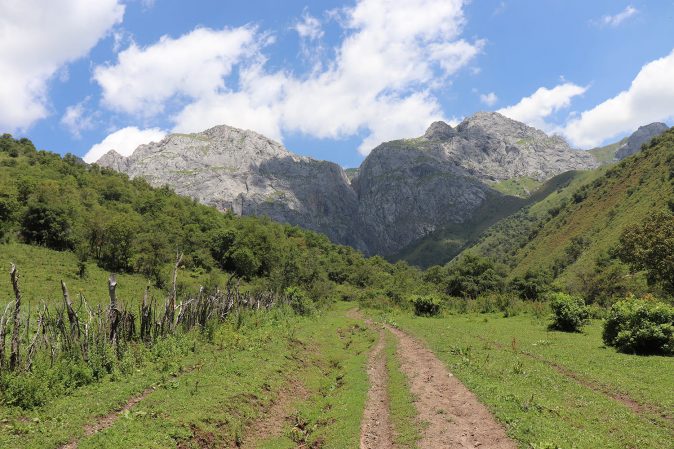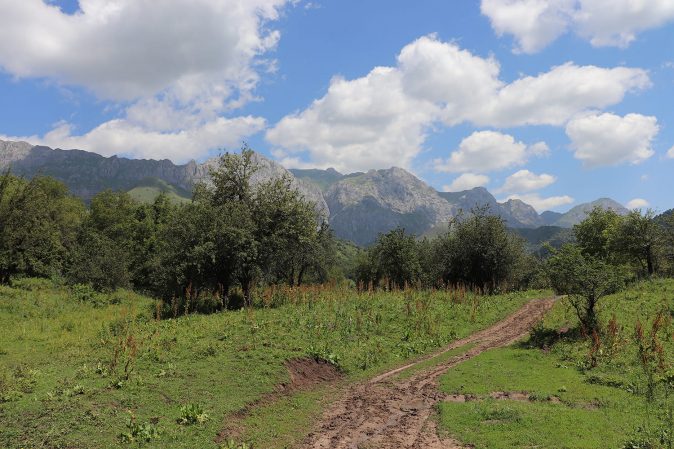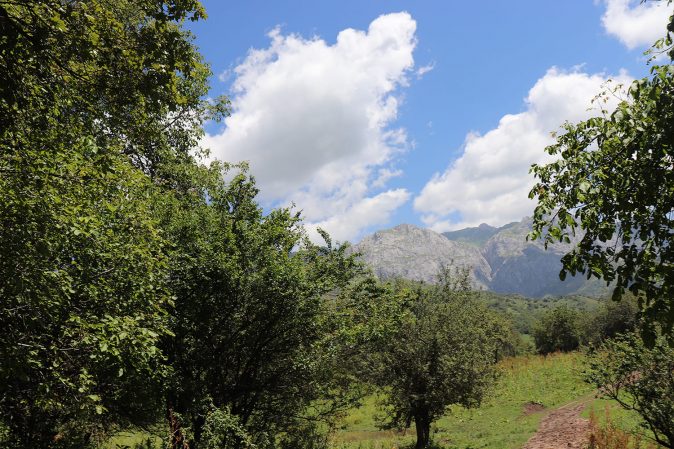
We invite cavers to take part in an International expedition to the karst region of the Fergana ridge.
The preliminary dates of the expedition are August 10-15, 2024.
The purpose of the expedition:
– Exploration of the unexplored Kyndyn-Kyry cave,
– Exploration of the unexplored Tash-Unkur cave,
– Speleo-biological research,
– Search and exploration of new caves in the karst area
The Fergana mountain range is composed of Paleozoic limestones. In hard-to-reach places on steep slopes, the locals showed us the entrances to the caves. The southwestern slopes of the Fergana ridge are thickets of walnut forests and bushes. Dense forest restricts access to karst areas.
For Kyrgyzstan, this is the wettest region, where the amount of atmospheric precipitation exceeds 1000 mm per year.
Therefore, the favorable combination of climatic conditions and geological structure of the karst regions of the Fergana ridge creates excellent conditions for the formation of caves. During the Mesozoic era, this area also represented a humid tropical region. This played an important role in the formation of caves here.
In 1975, cave explorers and scientists found two caves here. Locals tell scary stories about mysterious animals that hunt sheep and horses. Shepherds tell fantastic stories about the large animals that live in the caves.
The story of mysterious animals was told to us by one of the indigenous people who is engaged in the collection and sale of walnuts in this forest. He told us about the treasure, which was hidden in one of the caves in the valley of the Kuraves River at an altitude of over 2500 m. Near the entrance to the cave, bones of unknown animals were scattered. By all indications, there were no creatures near the cave at that time.
In 2019, we made a reconnaissance trip to find this cave. The entrance to the cave was in a hard-to-reach place. There are no normal roads in the dense forest here. Our Soviet army off-road vehicle could only reach the foot of the limestone cliffs, overgrown with dense forest.
In one of the scientific articles (1975) we found a description of two caves. Therefore, we decided to explore this karst area in 2022.
One of the local Kyrgyz said that the entrance to the cave is located at an altitude of more than 2500 m. Local Kyrgyz call the cave “Kyndyn-Kyry” or “Zindan”, which in the local language means prison. The path to the entrance is very difficult, so it is better to use horses.
In 1971, the scientist historian and archaeologist Dr. Leonid Ogudin partially explored the cave. As a result, he found a new biological species of insect in the cave. These insects lived on ice. Biologists have established that this is a new species of insect and named it “kivsyak Ogudin”. But we do not know whether this has been confirmed by the scientific community. If future expeditions of speleo-biologists again find this species of insect in the cave, then the cave should be taken under state protection. In 1971, Ogudina described the cave. Its length was 220 m and a depth of 30 m. But the scientist argued that the cave should have a continuation.
Ogudin describes that ice stalagmites and huge thin crystals can be seen inside the cave, in a large hall, even in summer. There is a glacier on the left side of the cave. Local old people heard from their ancestors that ore was mined in the cave in the 9th-10th centuries.
The ice in the cave may be of interest to speleo-glaciologists.
Next to the Kyndyn-Kyry cave, there is another cave – Tash-Unkur. In it, Valentin Ogudin discovered a large natural Kostya repository of cave bears. As a result of hydrocarbon analysis, the age of bear bones was about 7-8 thousand years. This is a special subspecies of the brown bear, very large (now there are no such species in the Tien Shan). The bear was named Ursus Arctos Ogudinus, which means “brown bear Ogudin”. Since then, the cave has been forgotten. According to the description of local shepherds, the size of the Tash-Unkur cave is about 200 m. According to Ogudin, both caves have a continuation.
The height of the cave entrances above the base of erosion is more than 2000 m (valley of the Kuraves river). Thus, we have to climb more than 2000 m from the road.
We are planning to explore these two caves. We also want to concentrate speleo research in the vicinity of these caves in order to find new caves.
We invite cavers and speleo-biologists to participate in an international expedition.
The most favorable period for the expedition is July-August. Speleo groups, clubs, federations, associations and other speleo organizations can choose any period for a trip to Kyrgyzstan. If you want to take part in the expedition, please contact us by email: info@speleo.kg



















